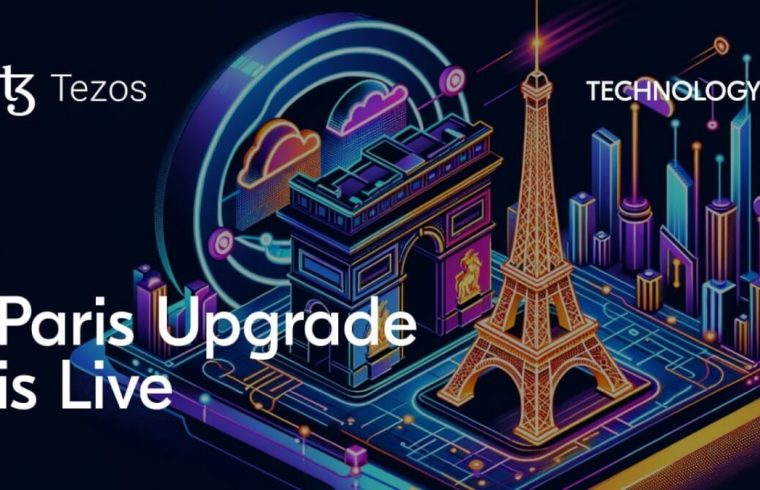Tezos has launched its sixteenth upgrade, Paris, on June 4th, 2024. This update introduces the Data Availability Layer (DAL) for improved Layer 2 throughput and reduces block times to 10 seconds, enhancing the overall performance of the blockchain.
Tezos Activates Sixteenth Upgrade, Paris, on Mainnet
The Tezos blockchain, known for its self-amending protocol and community-driven governance, activated its sixteenth upgrade, named Paris, on June 4th, 2024. This update aims to enhance the speed, scalability, and robustness of the Tezos network while continuing its tradition of community-driven innovation.
The Data Availability Layer (DAL) is a significant enhancement introduced in this upgrade. It fosters a decentralized and reliable data distribution network, allowing for better participation with more affordable hardware and bandwidth requirements. This upgrade significantly increases the throughput for Smart Rollups, enabling the handling of millions of transactions per second in the future, which is beneficial for high-demand applications like gaming and ticketing. The rollup data remains accessible and verifiable, supporting a wide range of decentralized applications (dApps). The implementation of the DAL makes Tezos a leading blockchain in terms of scalability without compromising security, making it a robust choice for developers and businesses looking to leverage blockchain technology for large-scale, data-intensive applications.
Improved Layer 1 Performance with Faster Block Times
The new upgrade reduces the block time from 15 seconds to just 10 seconds, resulting in better latency and faster transaction finality. This improvement ensures transactions are processed and confirmed more swiftly, providing a smoother user experience without compromising the network’s reliability and security. The enhanced speed makes Tezos a more attractive platform for various real-life applications, such as financial transactions, where quicker confirmation times are crucial. This advancement directly impacts users’ interaction with the Tezos blockchain, resulting in less waiting time and a more responsive network. The increased speed and reliability make Tezos a compelling choice for developers and users alike in the blockchain ecosystem.
Adaptive Issuance and Enhanced Proof-of-Stake Security
Adaptive issuance aligns the economics of Tezos’ native currency, tez, with real-world use cases, making it more suitable for lending markets, DeFi, and rollups. This reduces the need for custodians like exchanges to engage in baking, lowering administrative burdens and potential regulatory impacts. Additionally, lower reward rates can mitigate tax liabilities. The new staking mechanism increases the amount of funds locked in Tezos’ Proof-of-Stake, enhancing network security. Users can now contribute to a baker’s security deposit without relinquishing control of their funds, earning rewards while avoiding risks associated with centralized staking alternatives.
About Tezos
Tezos is an open-source, scalable, and energy-efficient public blockchain for assets and applications. It enables developers and businesses to deploy applications at a low cost. As one of the original Proof-of-Stake blockchains, Tezos is supported by a global peer-to-peer network and is valued for its long-term upgradability, open participation, and smart contract safety. The Tezos community includes artists, scientists, developers, and others who seek to create and transfer value seamlessly in a digital-centric world.












